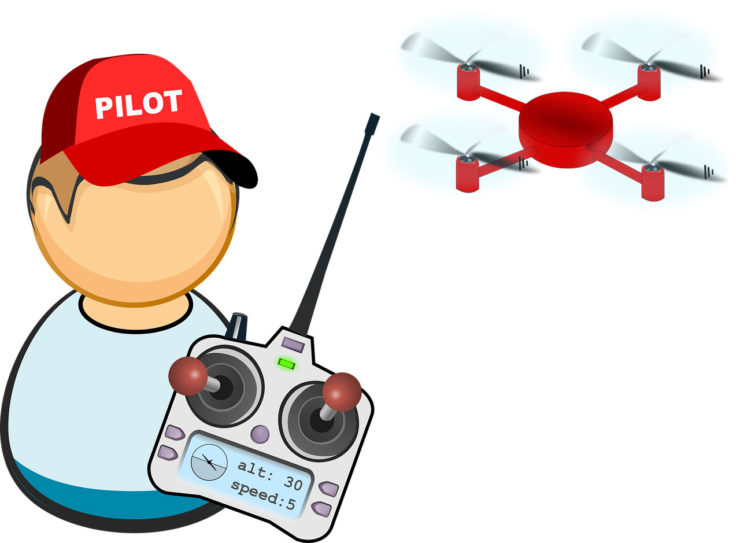What are FAA rules, laws and regulations in regards to flying Drones?
Ignorance to the rules and regulations of UAS (unmanned aircraft systems) flight is not an excuse for FAA violations. It is your responsibility to educate yourself on the rule and regulations of UAS flight before taking to the air in your drone.
The rules for what the FAA calls “flying for fun” are pretty simple and easy to follow, and fall under Public Law 112-5 § 336 (Special Rule for Model Aircraft). They include:
- No pilot licensing requirements
- Registration for all aircraft over 0.55 lbs., with a weight limit of 55 lbs.
- Keeping location limited to 5 miles from airports without “prior notification” to airport and air traffic control
- ALWAYS yield the right of way to manned aircraft
- Aircraft must be kept in line of site at all times
- Must follow all safety guidelines
- For Educational or Recreational purposes only

If you are “flying, the rules are a bit different and fall under Title 14 of the Code of Federal Regulation (14 CFR) Part 107. They include:
- Must have Remote Pilot Airman Certificate
- Must be 16 years of age to operate aircraft
- Pilot must pass TSA vetting process, in addition to passing the aeronautical knowledge test (must be completed at an FAA-approved testing center)
- Registration for all aircraft over .55 lbs., with weight limit of 55 lbs.
- Each flight must undergo preflight check to ensure safety of UAS
- Flights are contained to Class G airspace
- Aircraft must be kept in line of site at all times
- Flights must be performed during daylight hours, kept under 400 feet, and must be kept at or below 100 mph
- ALWAYS yield the right of way to manned aircraft
- Flights may not be conducted from a moving vehicle
- Flights are contained to commercial use (i.e. aerial surveying or photography), or flying incidental to business purposes (i.e. roof inspections or real estate photography)
Drone Certification
The application process is actually quite simple for NEW PILOTS if you’d like to become a certified drone pilot. Simply follow the steps as listed by the FAA if you meet the minimum age and knowledge requirements, are able to read and write English proficiently, and are mentally and physically able to SAFELY operate a small unmanned aircraft. The steps to certification are: (This certification will be good for 2 years.)
- Schedule, take and PASS the aeronautical knowledge test at a KTC (knowledge testing center) approved by the FAA.
- Form FAA Form 8710-13 must be completed, this will get your remote pilot certificate using the electronic IACRA system.
- Complete your background check through the Transportation Security Administration
- A permanent remote pilot certificate will be sent via mail after all FAA processing is complete.
For existing pilots, the process is very similar. The only difference in requirements are:
- Existing pilots must hold a certificate issued under 14 CRF part 61
- Must have completed a flight review within the previous 24 months
The steps for existing pilots are as follows:
- Go online and complete the “Part 107 small Unmanned Aircraft Systems (fUAS) ALC-451” course available via the FAA web site.
- Form 8710-13 must be completed for a remote pilot certificate
- Validate your applicant identity
- A temporary airman certificate will be issued via FSDO representative in most cases. A DPE or ACR will issue the certificate in some cases.
- Just as a new pilot, a permanent remote pilot certificate will be sent via mail once all FAA processing is complete.
Some exceptions to the rules:
Under the UAS rule (14 CFR part 107) you are able to apply for a certificate of waiver, which will allow for some deviations from certain operating rules, provided the FAA finds that it is safe to proceed.
- A certificate of waiver for certain operations under Rule 107 is required if the following occurs:
- Anything that is beyond visual line of sight
- Night operations – such as video cinematography for TV or movie night scenes
- An aircraft that is 55 lbs. or heavier, which might include package delivery, crop dusting, firefighting (with retardant delivery), etc.
- Flights higher than 400 feet
- Anything that requires a speed of over 100 mph
- Any operations that require flights over persons, such as concerts, sports events, or live news events.
- Any operations that require control from a moving vehicle (in non-sparsely populated areas)
While the exceptions listed are just a few scenarios, it doesn’t hurt to submit an application for waiver if you think that your UAS aircraft operation might fall outside of Part 107. Don’t be afraid to apply for the waiver, just be prepared to supply your plan of safety. Applicants of this waiver should submit all requests to the FAA as early as possible.
Drones are the wave of the future, and keep in mind the rules and regulations are ever evolving to match technology and the needs of pilots. The more you know about the rules and regulations governing drone usage, the easier it will be to operate and own one in the future.
Happy Droning!
|